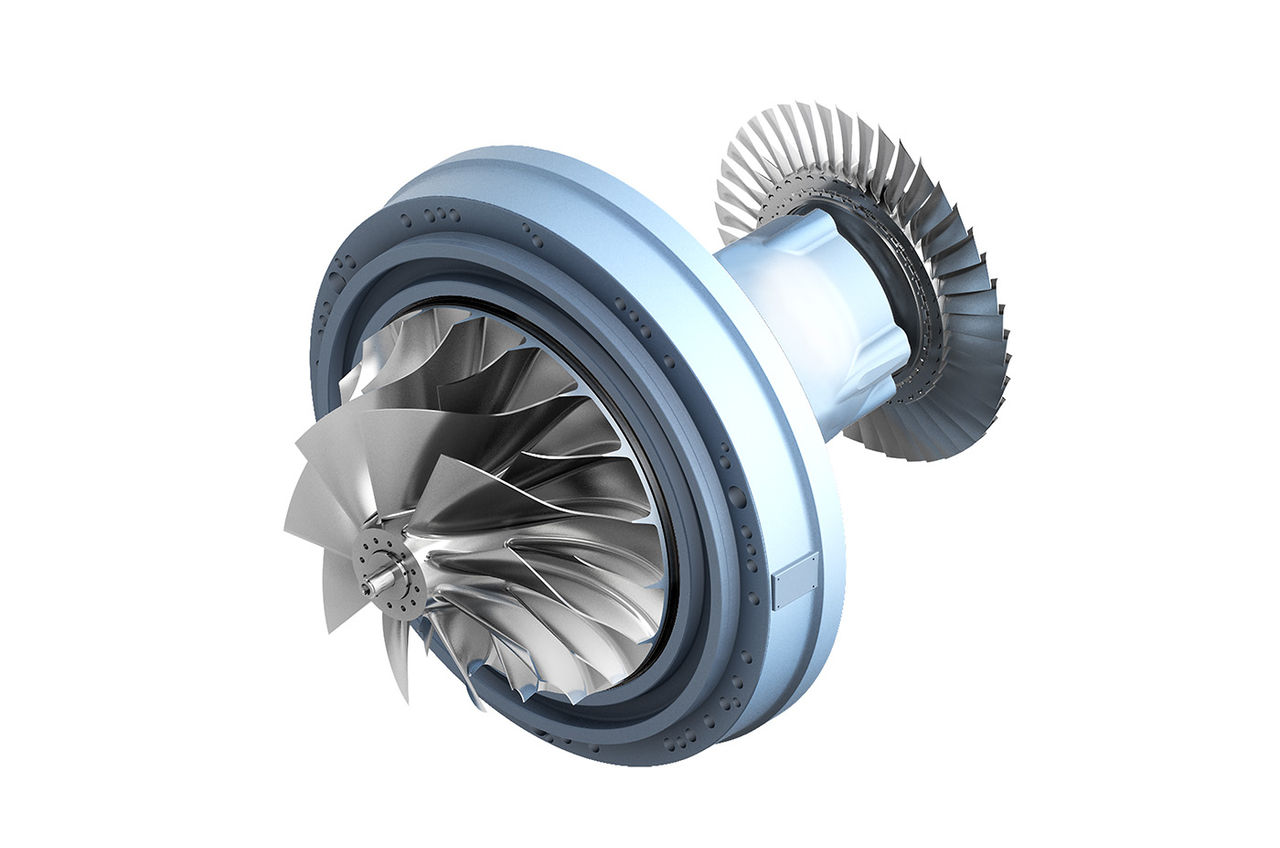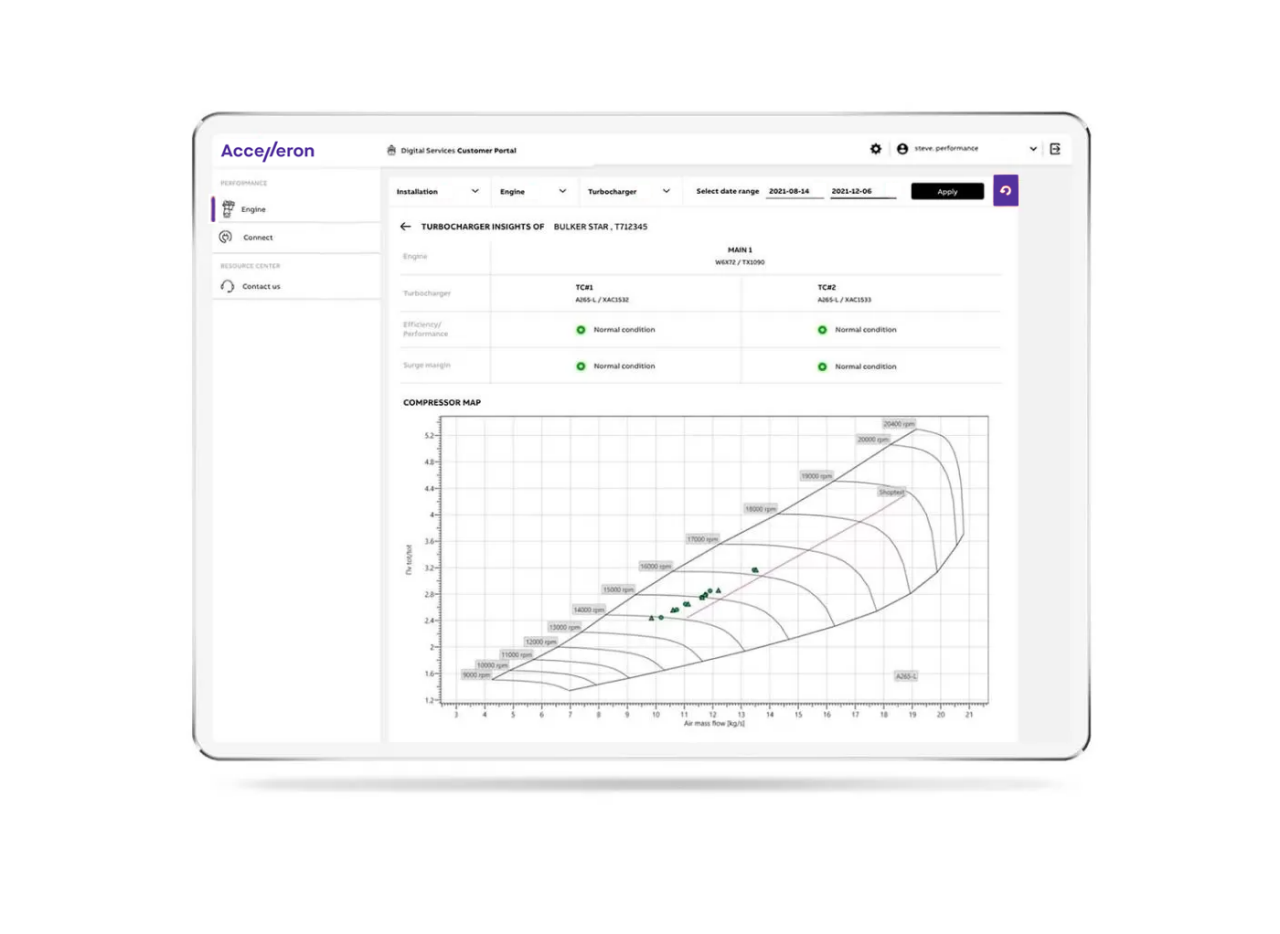Picking the right turbocharger specification is a complicated task – it’s never simply a case of opting for the biggest, the cheapest or the latest. It’s critical that your turbocharger matches your engine and requirements perfectly if you want the best results, and that’s why Accelleron provides access to compressor maps to help customers get ahead.
Along with helping you to choose the correct specifications for your equipment, Accelleron also provides in-depth analytics as standard for owners of new A100-L/A200-L turbochargers, through our Turbo Insights feature. This opens up visibility into compressor maps to enable analysis of operational data from day one.
 An A200-L turbocharger cartridge
An A200-L turbocharger cartridge
This transparency over how the turbocharger performs enables us to turn data into actionable insights, and compressor maps play a large part in highlighting potential for performance optimization, fuel savings, CO2 emissions reduction and more.
What is a compressor map?
Alexander Mutter, Senior Manager, Medium and Low Speed Products at Accelleron, explains: “The compressor map basically shows the operating area of a compressor. The major point is that it highlights a so-called surge line on the left-hand side, and the operating point of the compressor must be right of this line. You cannot operate on the left side of the line.”
Volume flow – how much air flows through the turbocharger per unit of time – is shown on the horizontal axis of the compressor map. This is related to an ambient 25-degree temperature. Corrections can be made using a specific formula to account for different temperatures at the air inlet. The pressure ratio – how much total (including dynamic) pressure the compressor stage generates at a given speed – is highlighted on the vertical axis.
“You provide a certain pressure; you have a certain volume flow and/or turbocharger speed, and this gives the operating point on the compressor map,” adds Alexander. “The idea is to have this operating point in a reasonable range on the compressor map. This basically dictates the layout of the whole turbocharger specification. This must be done at the planning stage when you add a turbocharger to an engine.
“It’s very important to have a wide operating area, providing much more stability,” adds Alexander. “Through our compressor development, we are able to provide wide compressor maps, and this is an area where we offer plenty of value to the market.”
Making your equipment more efficient
Compressor maps have a larger role to play in the life of a turbocharger, however, and we don’t just use them when originally selecting the most suitable specifications for a given engine. We also use them as an integral part of Turbo Insights, providing transparency and insights throughout a turbocharger’s warranty period and beyond.
Turbo Insights customers have 24/7 access to an online customer portal, with the ability to access performance insights in a transparent, data-driven way. Presented as simple visual indicators, ship owner and operators can easily see how well their turbochargers are performing, and if everything is operating as it should.
 View a compressor map on any screen
View a compressor map on any screen
Alexander explains: “The basic layout on a compressor map is for our application engineers to remain a certain distance from the surge line, providing a safety margin that keeps the turbocharger running as efficiently and stable as possible and helps to avoid surging.
“If you cross the surge line on the compressor map, the airflow goes backwards, preventing you from achieving the correct pressure ratio. In the real world, this can result in potential damage to the turbocharger and reduced air supply to the engine, as the air flows the wrong way.
“An operating range might come closer to the surge line through wear and tear – whether it be through contamination or perhaps erosion on the compressor or turbine. Increased exhaust back pressure and increased pressure losses on the cooler or silencer can also move the operation line closer to the surge margin.”
As such, analytics from Turbo Insights could be the difference between an engine that runs poorly, with high emissions or low fuel efficiency, and an engine that runs as efficiently as possible, saving the owner or operator when it comes to both operating costs and unplanned maintenance.
Turbo Insights is applicable for A100-L/A200-L turbochargers for all newbuilding projects, and available at no additional cost. To find out more, contact your nearest service station.














